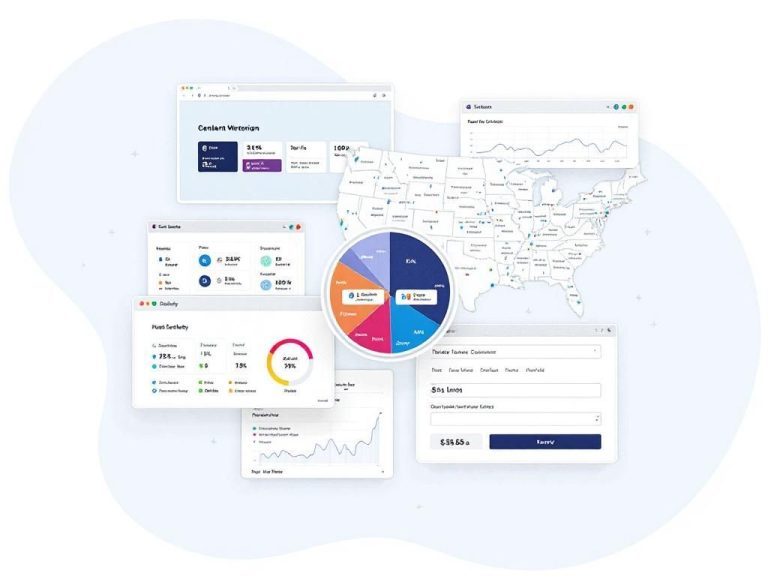As machine learning and artificial intelligence continue to evolve, the demand for robust training datasets has become critical. Synthetic data tools are emerging as essential solutions for developers and data scientists, allowing them to generate high-quality datasets that mimic real-world scenarios. This article dives into some of the top synthetic data tools poised to make an impact in 2025, evaluating their features, applications, and potential benefits for model training.
Understanding Synthetic Data
Synthetic data is artificially generated data that resembles real data but does not contain any identifiable information from actual datasets. It is created using algorithms and models designed to simulate realistic scenarios, making it an invaluable resource for training machine learning models. The benefits of synthetic data include:
- Enhanced privacy and security by eliminating sensitive information
- Cost-effective data generation without the need for extensive data collection
- The ability to create datasets for uncommon classes or rare events
- Control over data attributes and distributions
Key Features to Look for in Synthetic Data Tools
When evaluating synthetic data tools, several critical features should be considered to ensure they meet your model training needs:
- Data Generation Methodology: The algorithms used to generate synthetic data should be robust and capable of producing realistic outputs.
- Flexibility: The tool should allow users to customize datasets based on specific attributes, distributions, and scenarios.
- Integration: The compatibility of the tool with existing data pipelines and machine learning frameworks is essential for seamless usage.
- Scalability: The tool should support generation of large datasets as needed.
- Validation Mechanisms: Tools should have built-in methods for validating the quality and authenticity of the generated synthetic data.
Top Synthetic Data Tools for 2025
Here’s a look at some of the top synthetic data tools projected to lead the market in 2025:
1. Synthesia
Synthesia has garnered attention for generating realistic video content using synthetic data. Its capabilities extend to creating training datasets for models focused on video analysis, facial recognition, and even emotion detection.
2. DataGen
DataGen specializes in generating high-fidelity synthetic datasets for computer vision applications. It allows users to customize scenes, objects, and environments, making it ideal for autonomous vehicle training and robotics.
3. Mostly AI
Focusing on privacy, Mostly AI generates synthetic datasets that preserve the statistical properties of original data while protecting sensitive information. Its applications are prevalent in finance, healthcare, and other data-sensitive industries.
4. Synthea
Synthea is an open-source synthetic patient generator that simulates the lifecycle of patients. It is primarily used in healthcare applications, enabling researchers to train models on diverse patient scenarios without compromising privacy.
5. Hazy
Hazy provides synthetic data solutions specifically designed for financial services. It enables organizations to create datasets that support risk modeling and fraud detection while ensuring compliance with data regulations.
Comparison Table of Leading Synthetic Data Tools
| Tool Name | Main Focus | Key Features | Industry Applications |
|---|---|---|---|
| Synthesia | Video Synthesis | Realistic video generation, customizable scenarios | Media, entertainment |
| DataGen | Computer Vision | Scene and object customization, high fidelity | Automotive, robotics |
| Mostly AI | Data Privacy | Statistical preservation, flexible customization | Finance, healthcare |
| Synthea | Healthcare Simulation | Patient lifecycle simulation, open-source | Healthcare, research |
| Hazy | Financial Services | Data compliance, risk modeling | Finance, insurance |
Applications of Synthetic Data in Model Training
Synthetic data finds applications across various domains, enhancing model training in the following ways:
Machine Learning and AI
Data scientists can utilize synthetic datasets for:
- Overcoming data scarcity in training models
- Creating edge cases that are difficult to obtain from real-world data
- Improving model generalization by diversifying training datasets
Healthcare Research
In healthcare, synthetic data allows researchers to:
- Train models for disease prediction and management without compromising patient privacy
- Simulate diverse patient profiles to study the effects of treatments
Financial Services
Financial organizations leverage synthetic data to:
- Build robust fraud detection systems
- Test risk assessment models without exposing sensitive information
Challenges and Considerations
Despite the benefits, several challenges accompany the use of synthetic data:
- Quality Control: Ensuring that synthetic data accurately reflects the complexities of real-world data can be tricky.
- Domain Gap: Synthetic data may not capture all the nuances of specific domains, leading to suboptimal model performance in real-world applications.
- Industry Acceptance: Some sectors may still be hesitant to adopt synthetic data due to regulatory concerns or lack of understanding.
Future Trends in Synthetic Data Generation
As technology advances, several trends are likely to shape the future of synthetic data generation:
- The rise of AI-driven data generation techniques that can create even more realistic datasets
- Increased integration of synthetic data tools within machine learning frameworks
- Greater emphasis on ethical considerations and compliance with data protection regulations
Conclusion
Synthetic data tools are set to play a pivotal role in the evolution of machine learning and artificial intelligence by enabling high-quality model training without the constraints of traditional data limitations. As we move towards 2025, investing in the right synthetic data tools will be essential for organizations looking to enhance their data capabilities and drive innovation. By understanding the key players in the market and the applications of synthetic data, professionals can make informed decisions that align with their strategic goals.
FAQ
What are synthetic data tools?
Synthetic data tools are software applications that generate artificial data that mimics real-world data, enabling organizations to train machine learning models without the constraints of using sensitive or limited real data.
Why is synthetic data important for model training?
Synthetic data is crucial for model training as it allows for the creation of diverse datasets, helps overcome data privacy issues, and can be tailored to specific scenarios, enhancing model performance and robustness.
What are the top synthetic data tools for 2025?
Some of the top synthetic data tools anticipated for 2025 include DataGen, Synthea, and Hazy, which are known for their advanced features in generating high-quality, realistic datasets.
How do I choose the right synthetic data tool for my needs?
When choosing a synthetic data tool, consider factors such as the type of data you need, the tool’s customization capabilities, ease of integration with existing systems, and the level of support provided.
Can synthetic data improve machine learning model accuracy?
Yes, synthetic data can significantly improve the accuracy of machine learning models by providing more varied and abundant training data, helping models learn from a broader spectrum of scenarios.
Are there any risks associated with using synthetic data?
While synthetic data reduces risks related to privacy and bias, it can also introduce inaccuracies if not generated correctly, potentially leading to models that do not generalize well to real-world situations.




